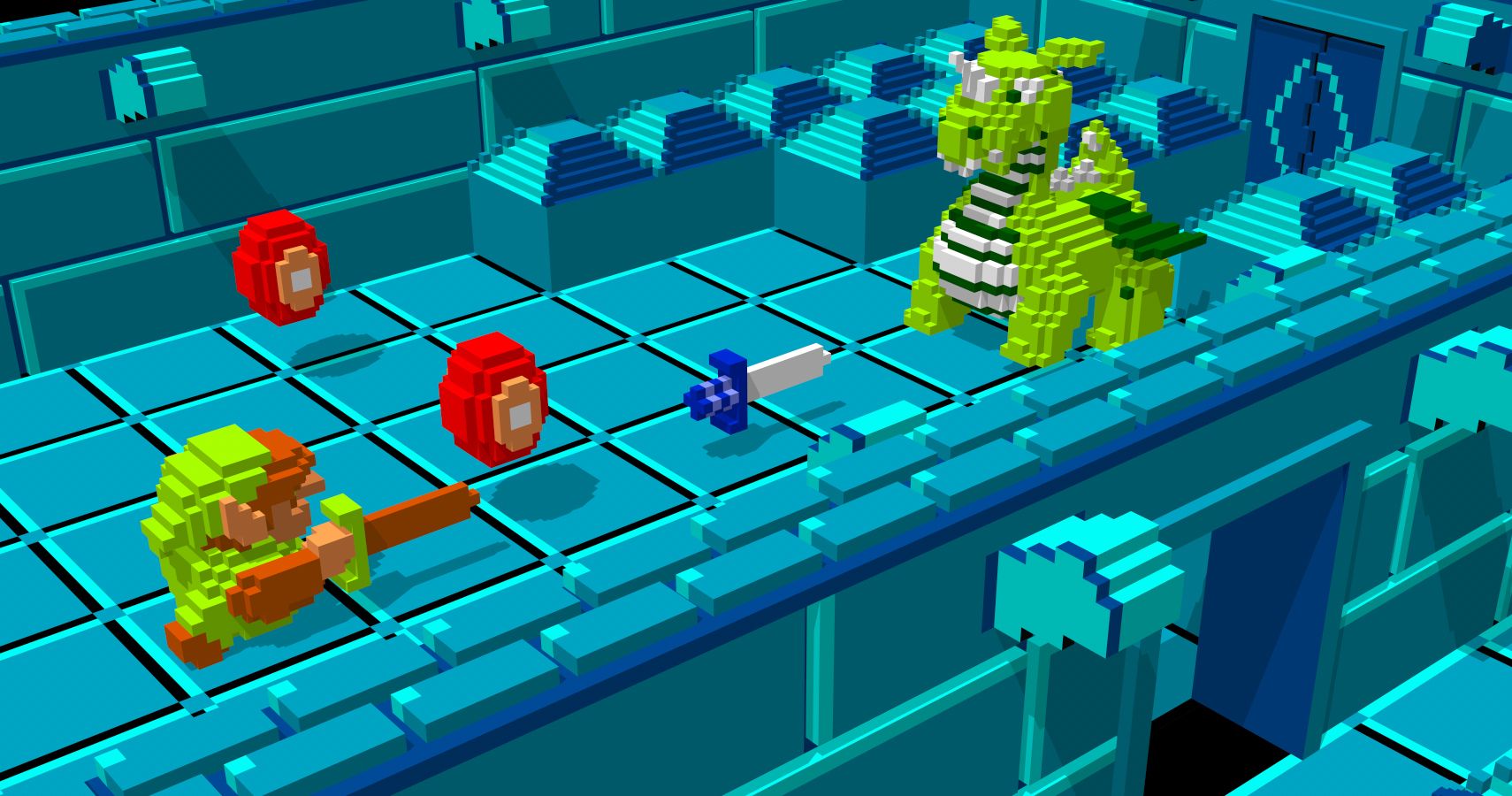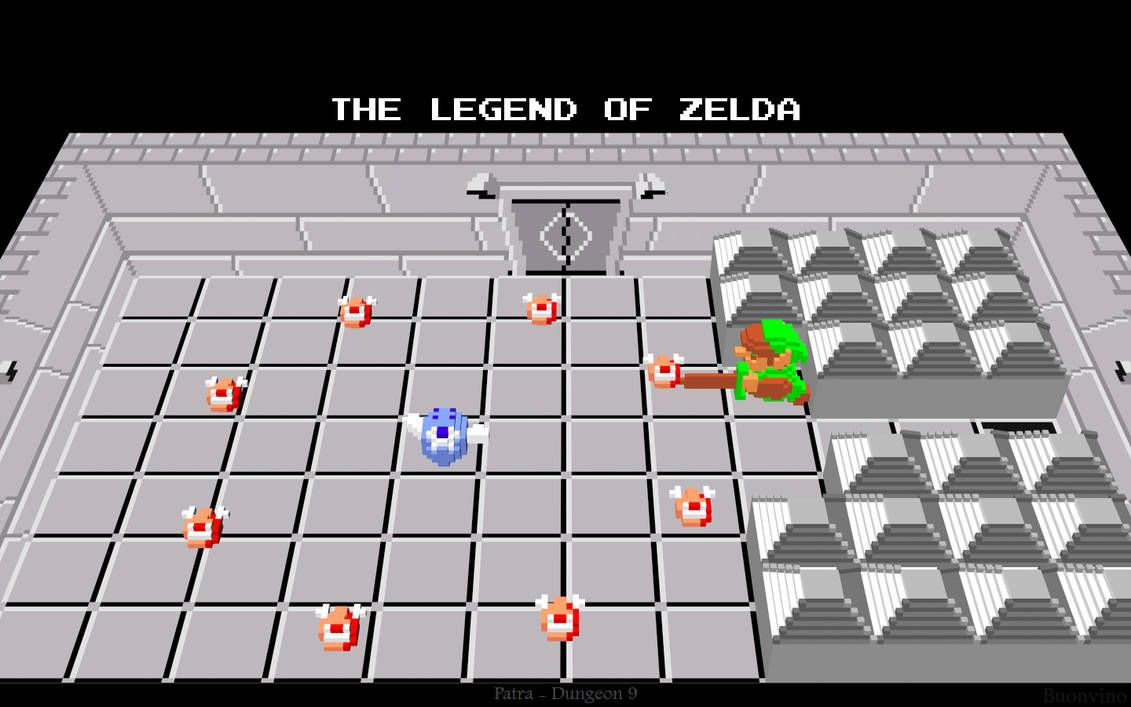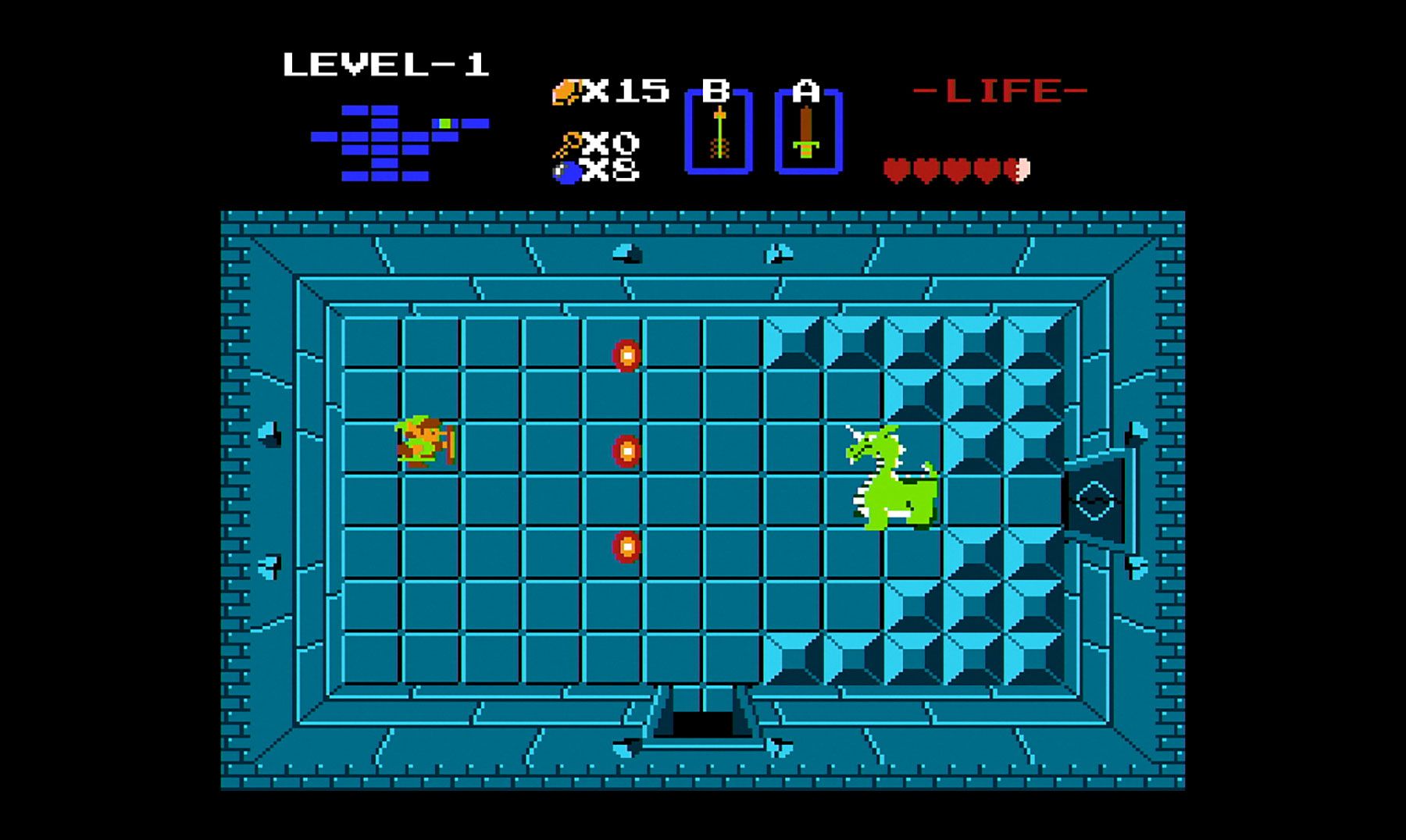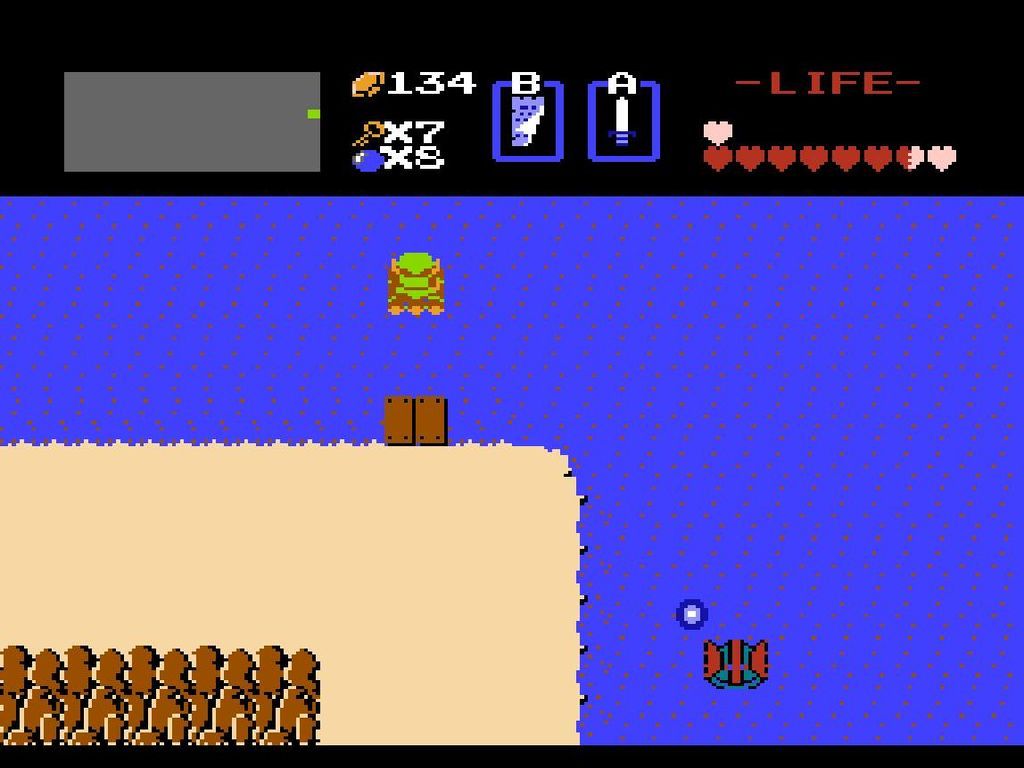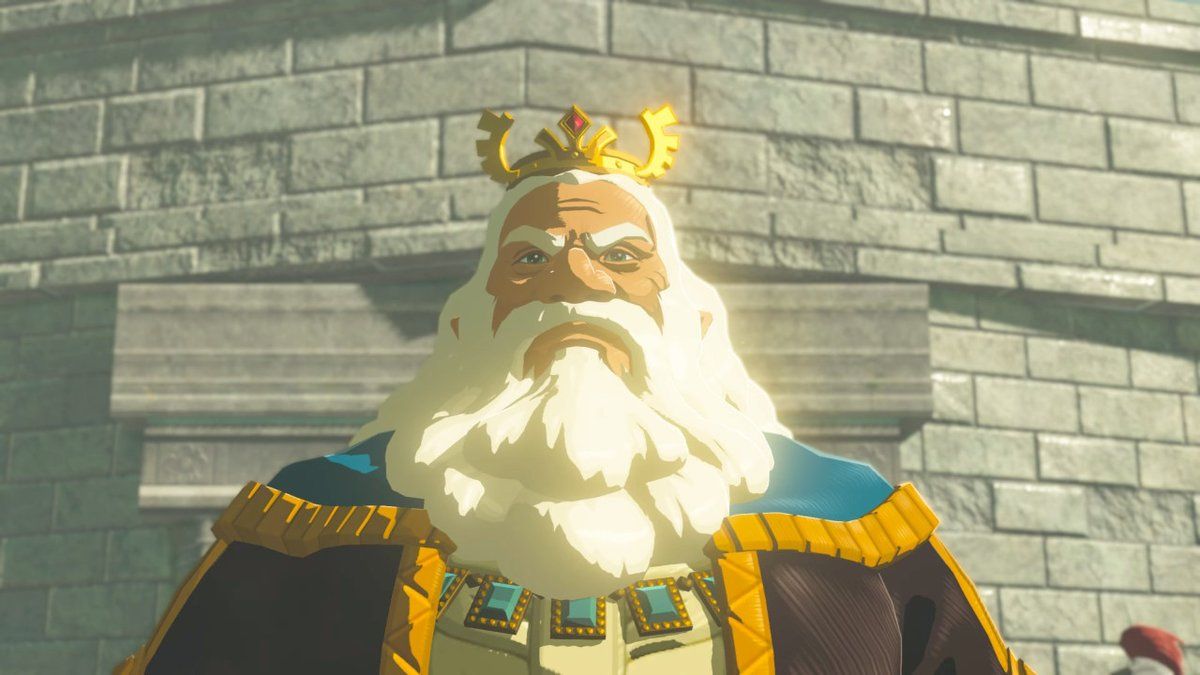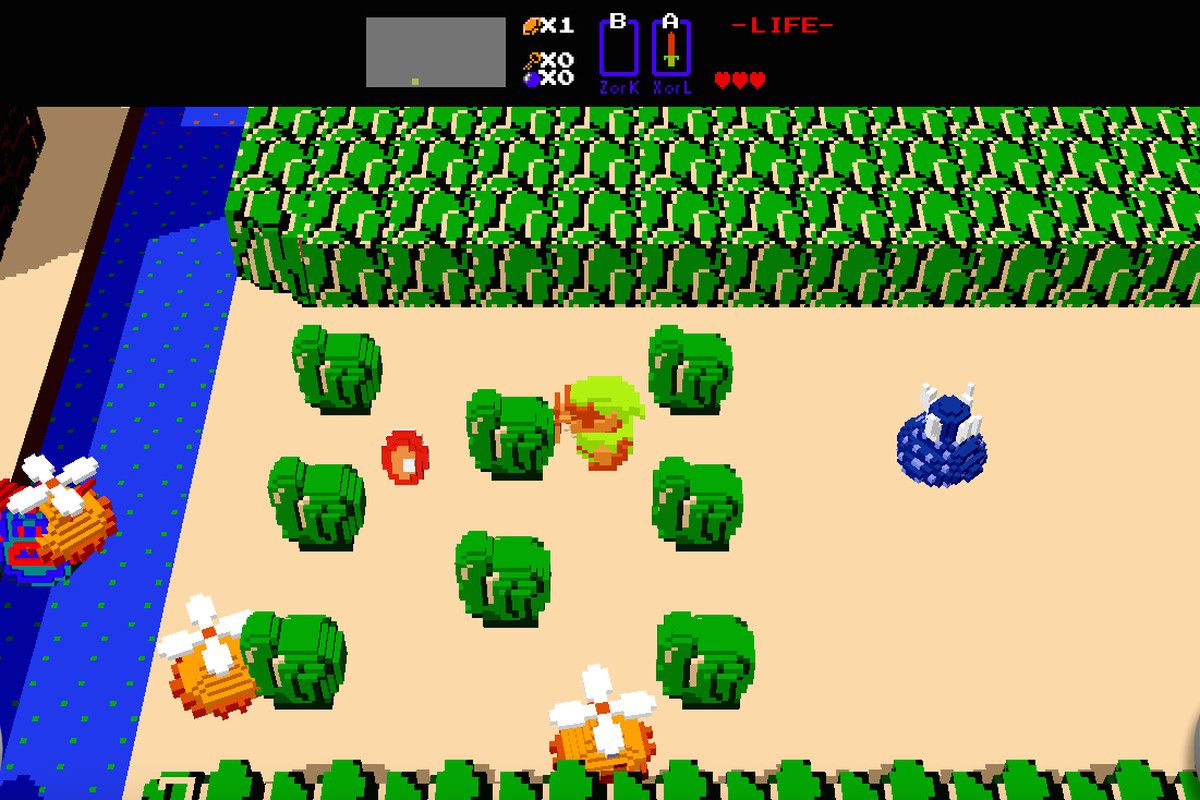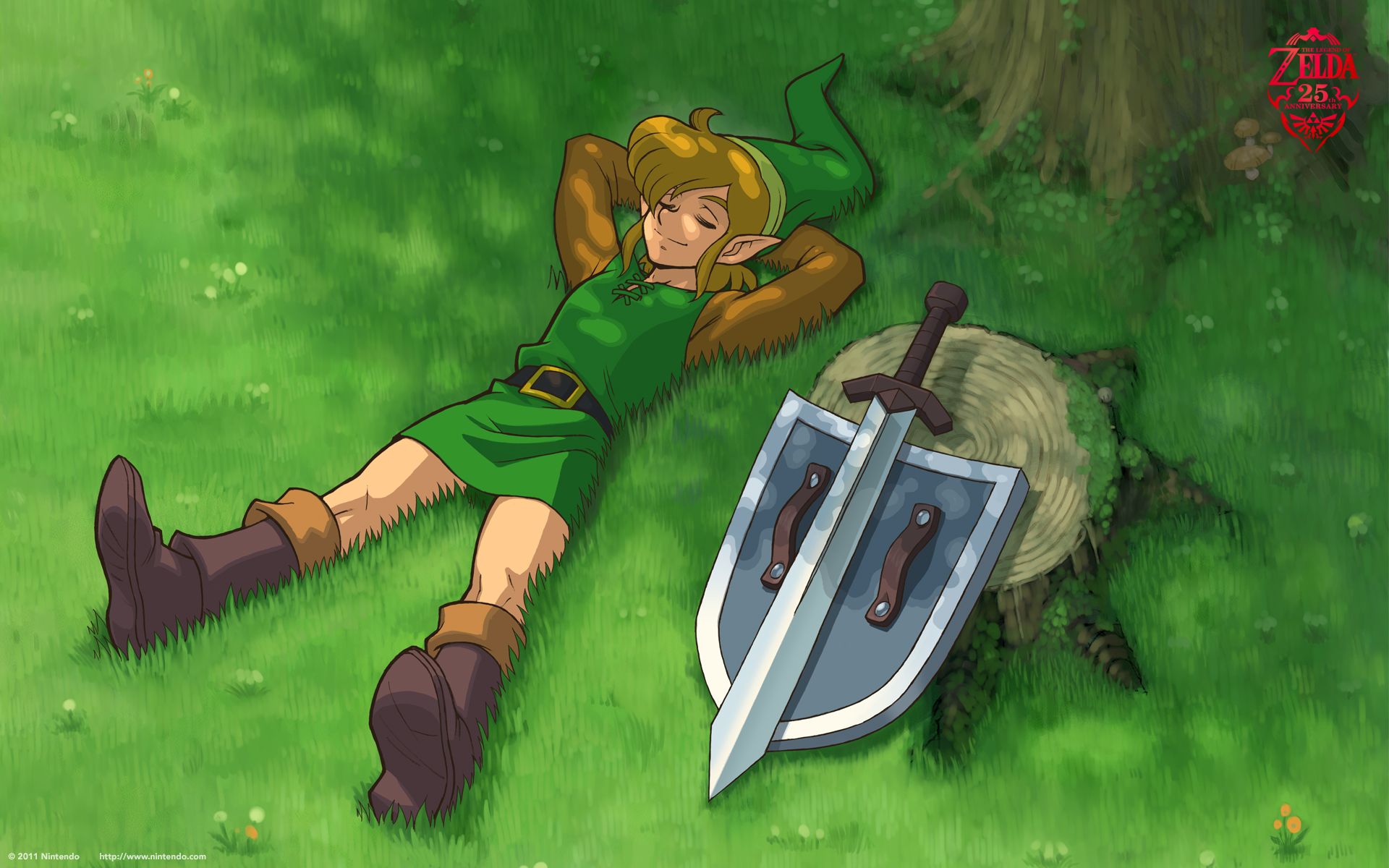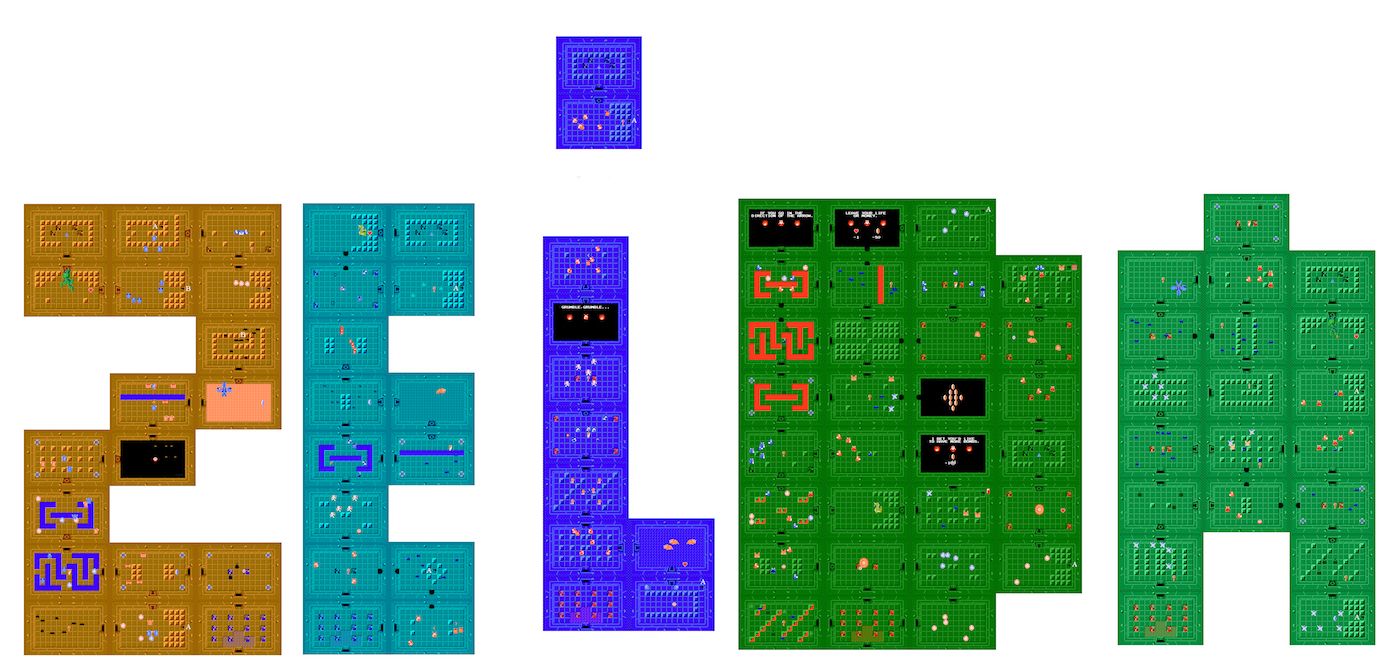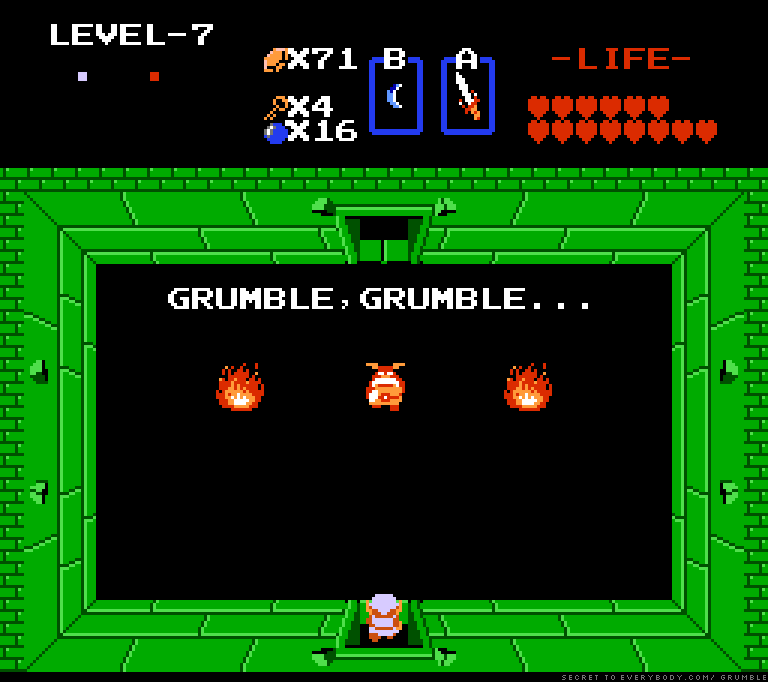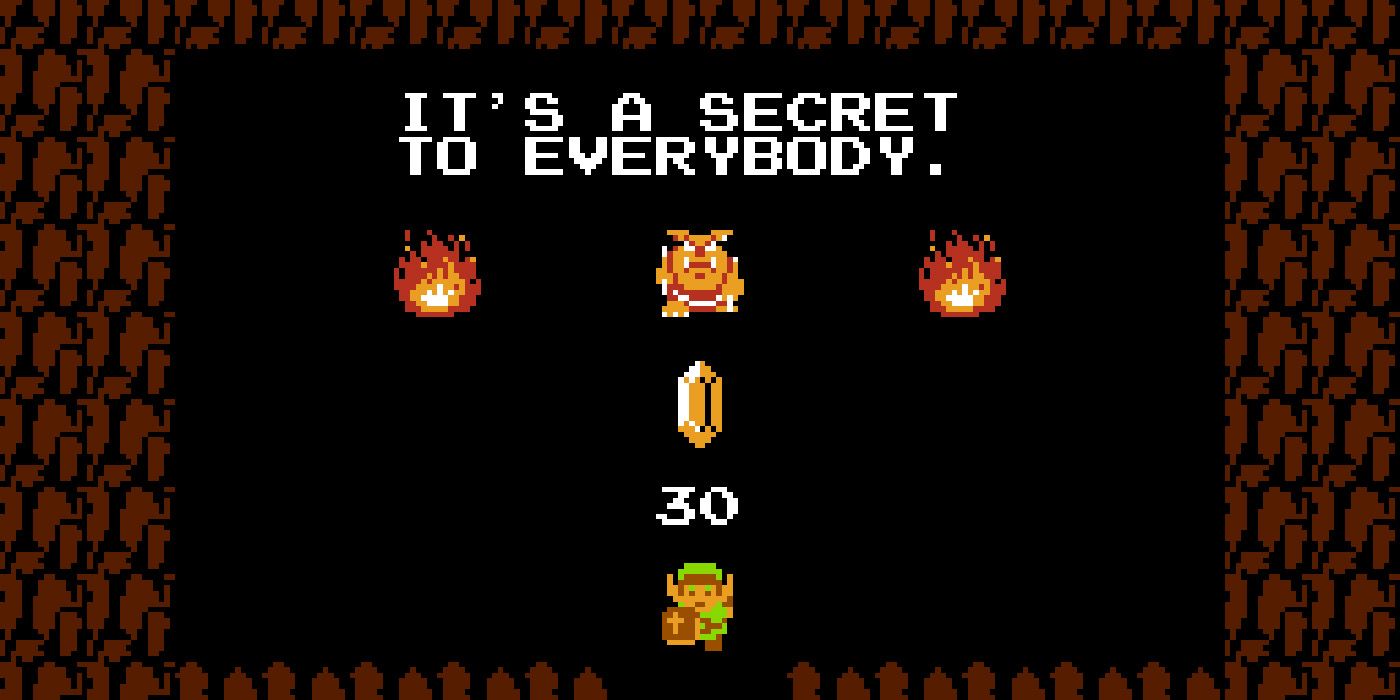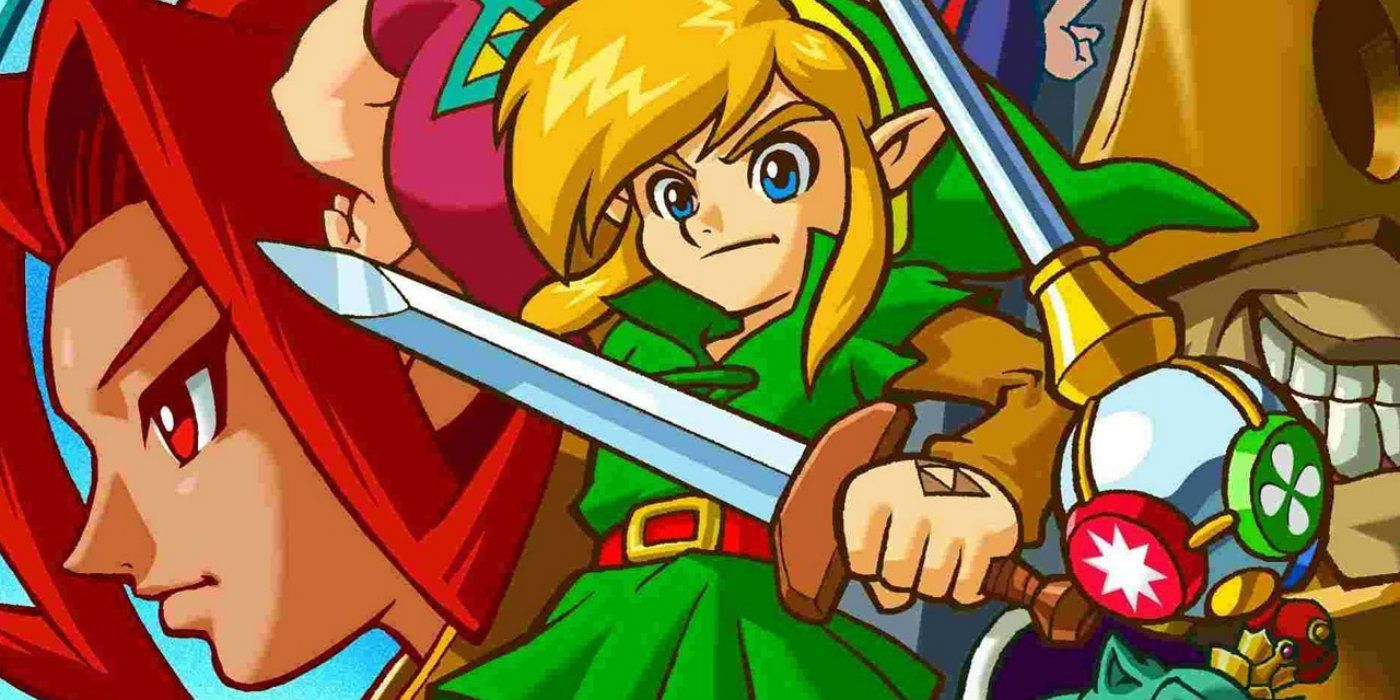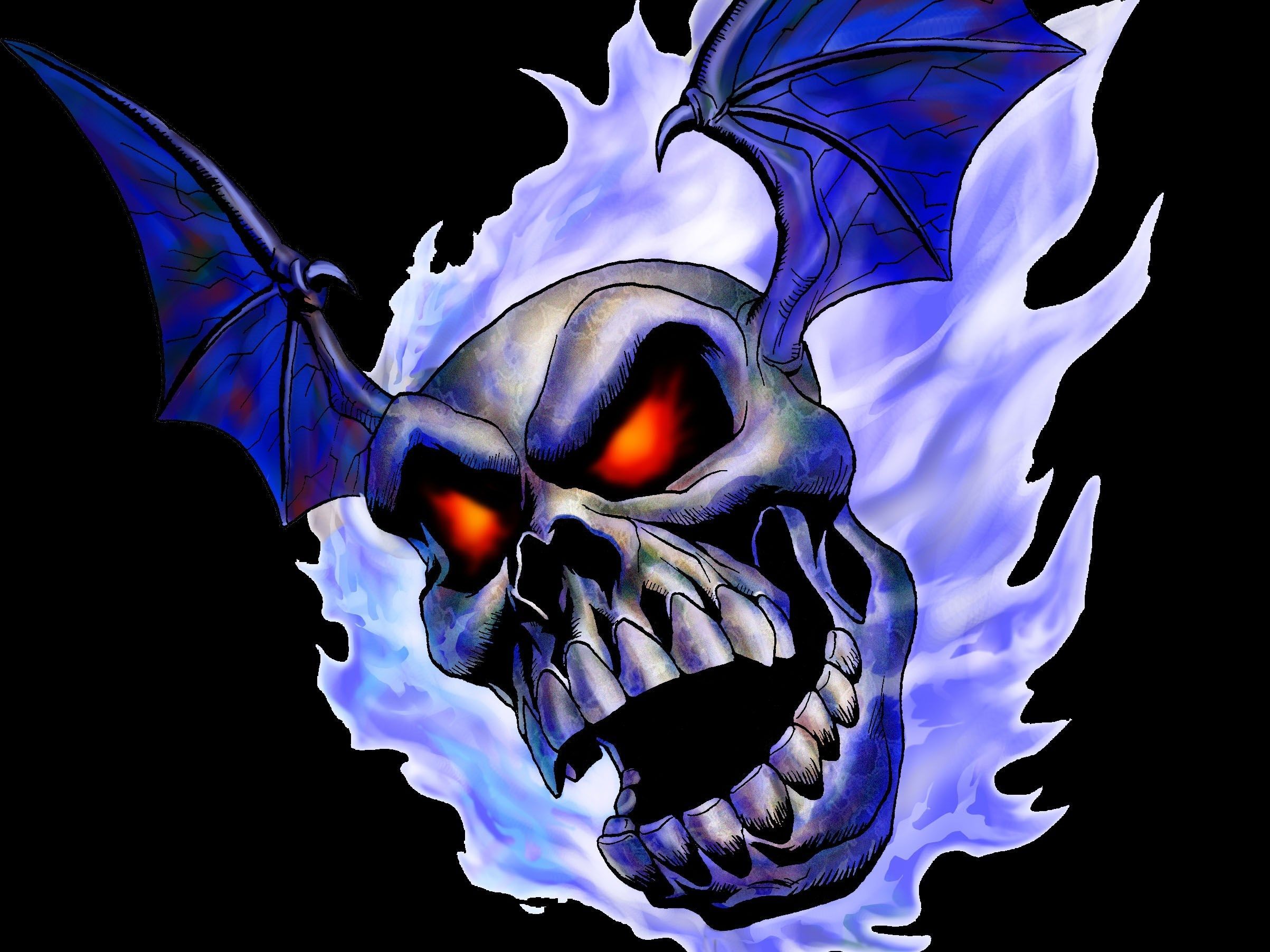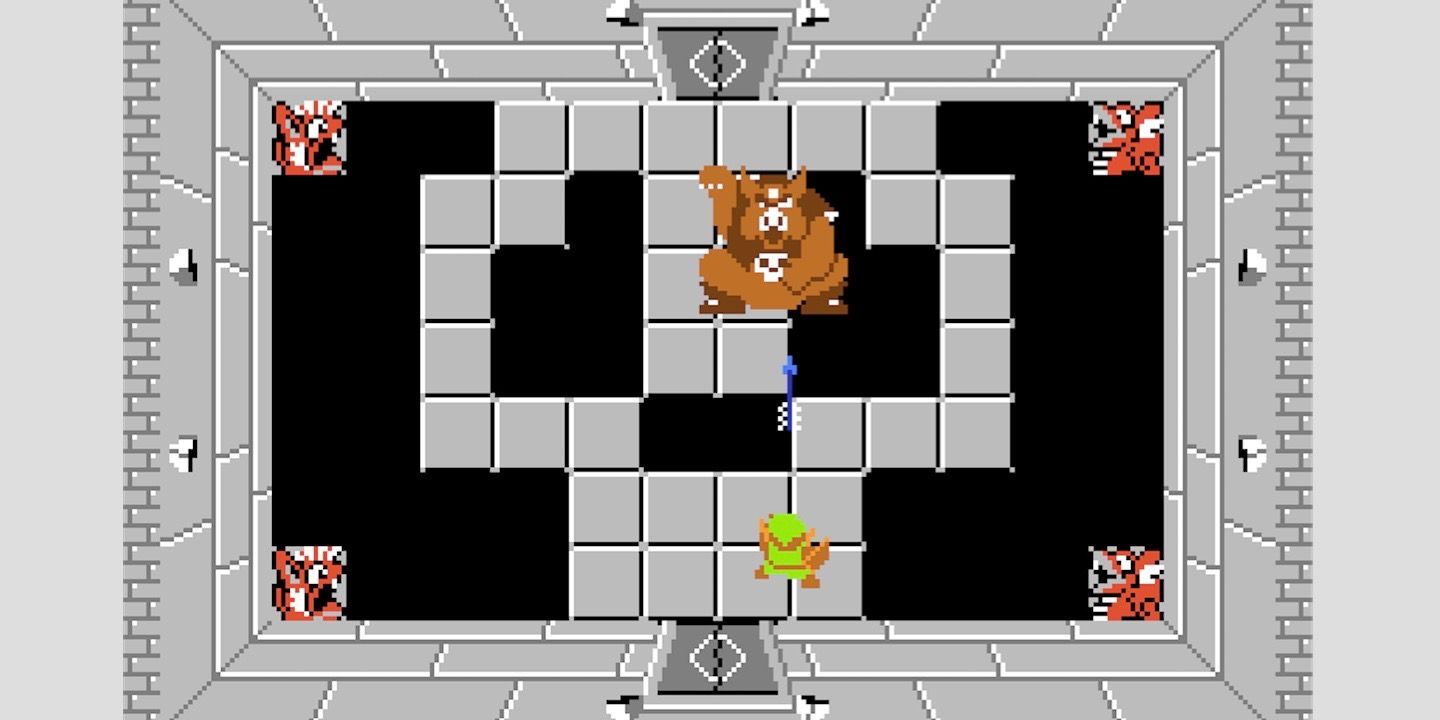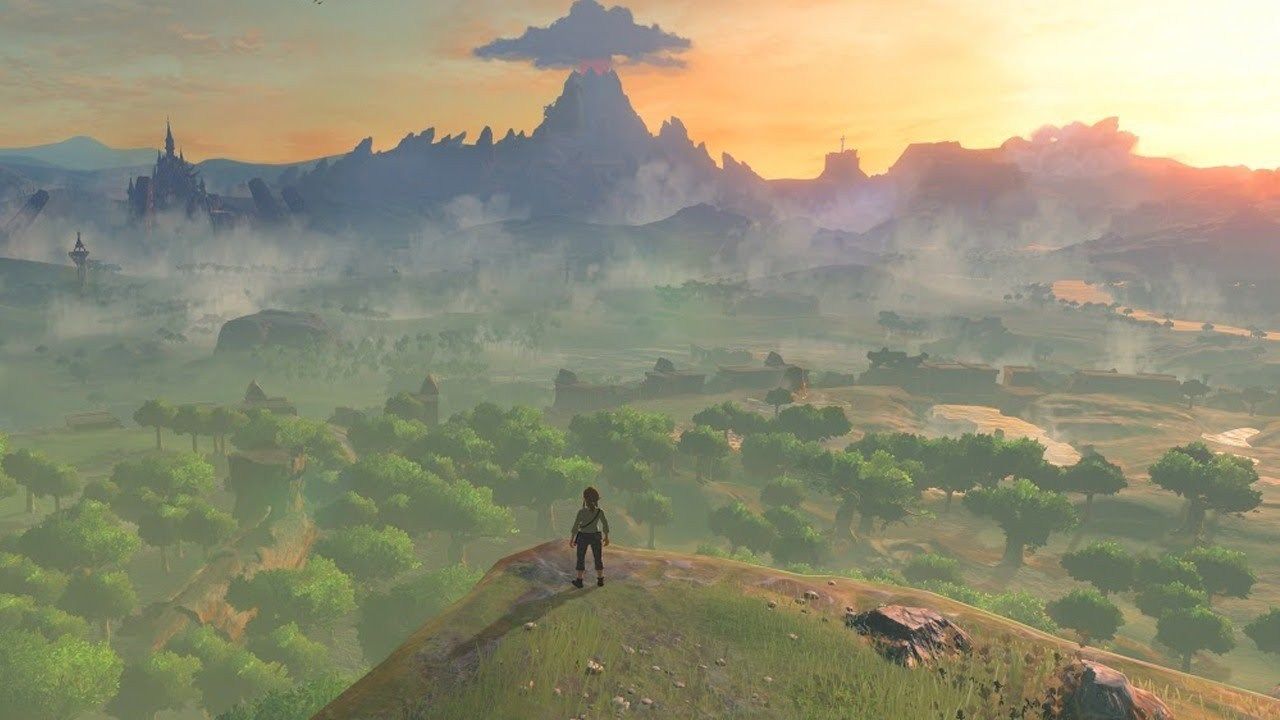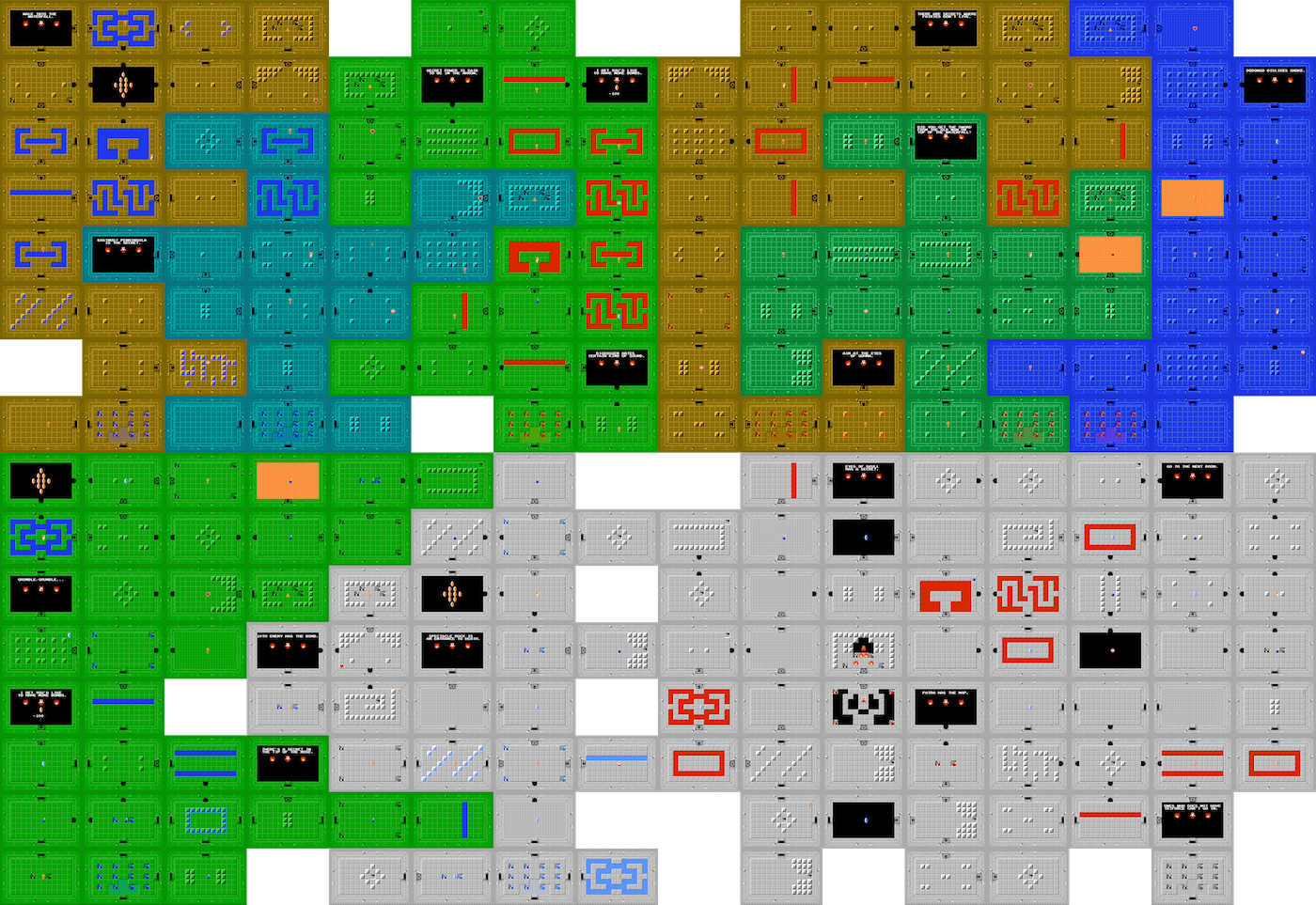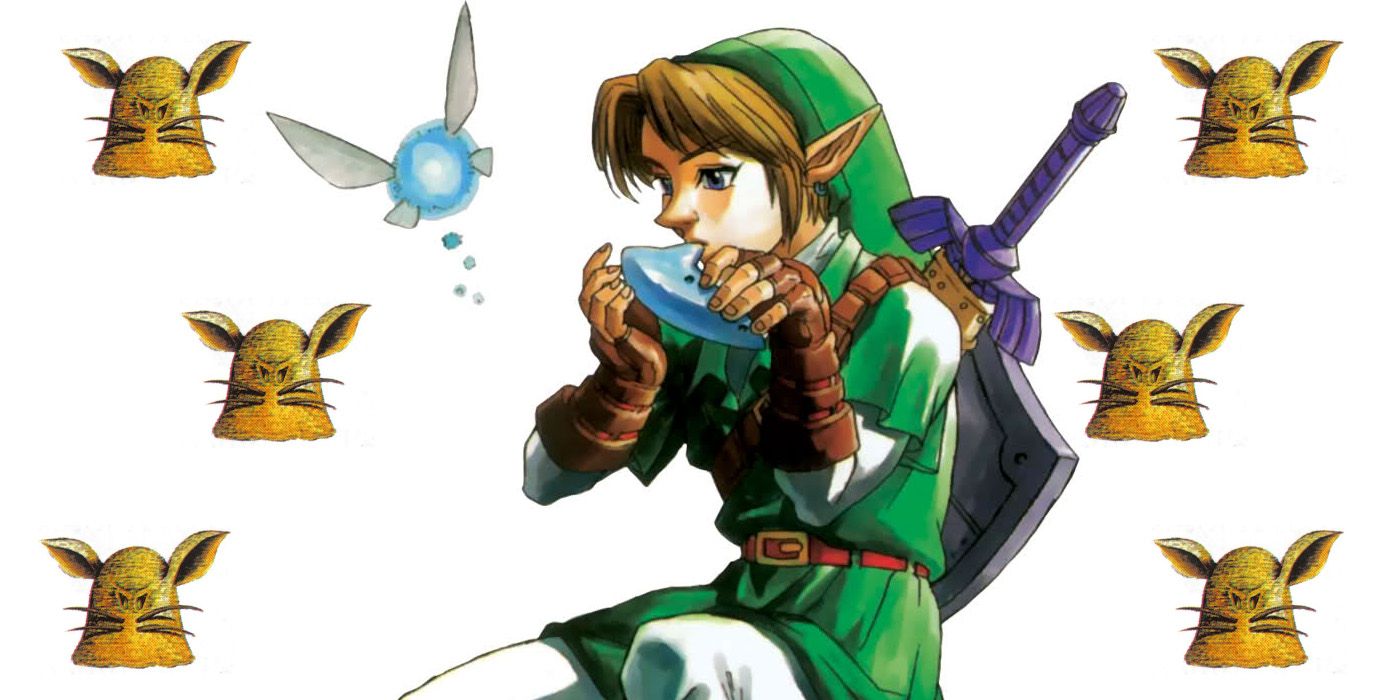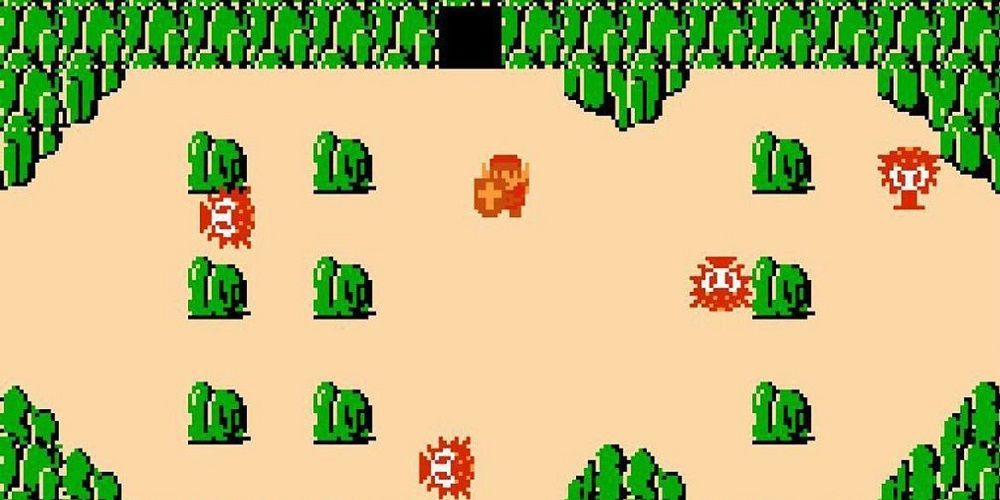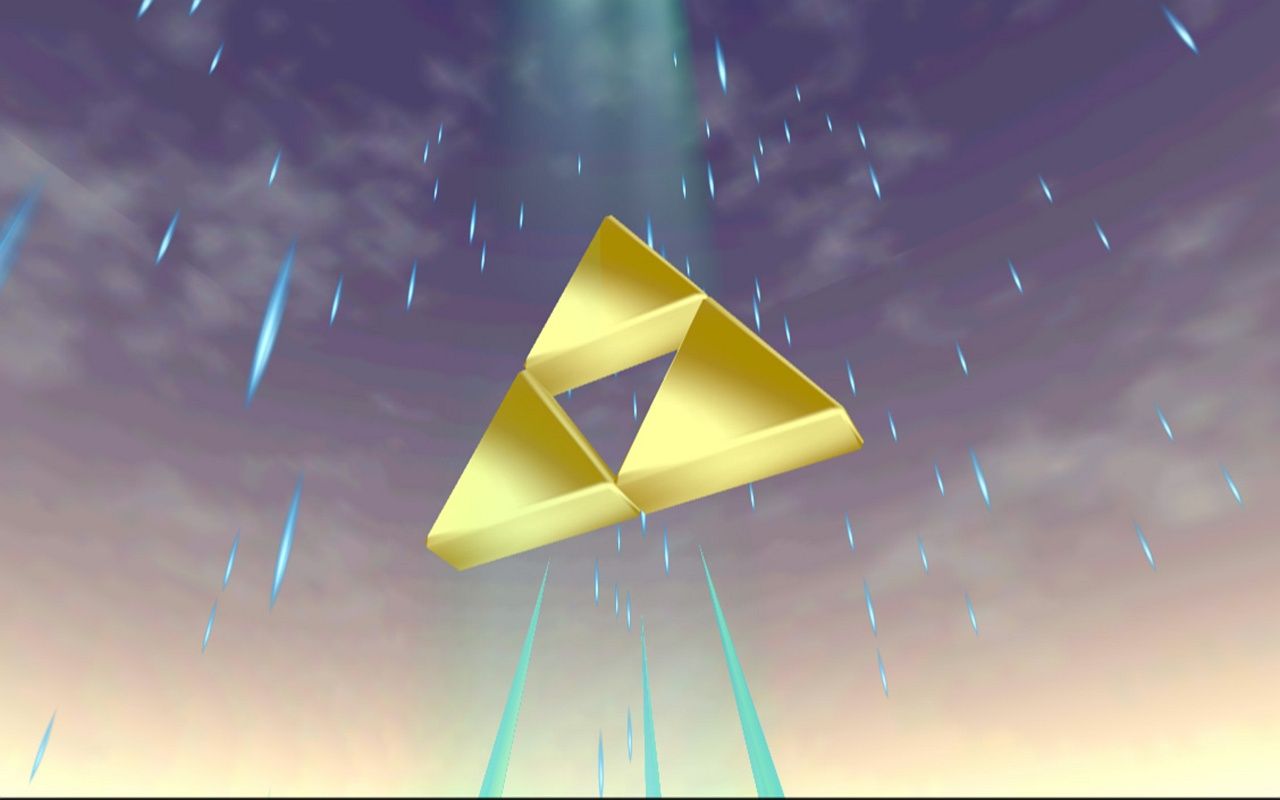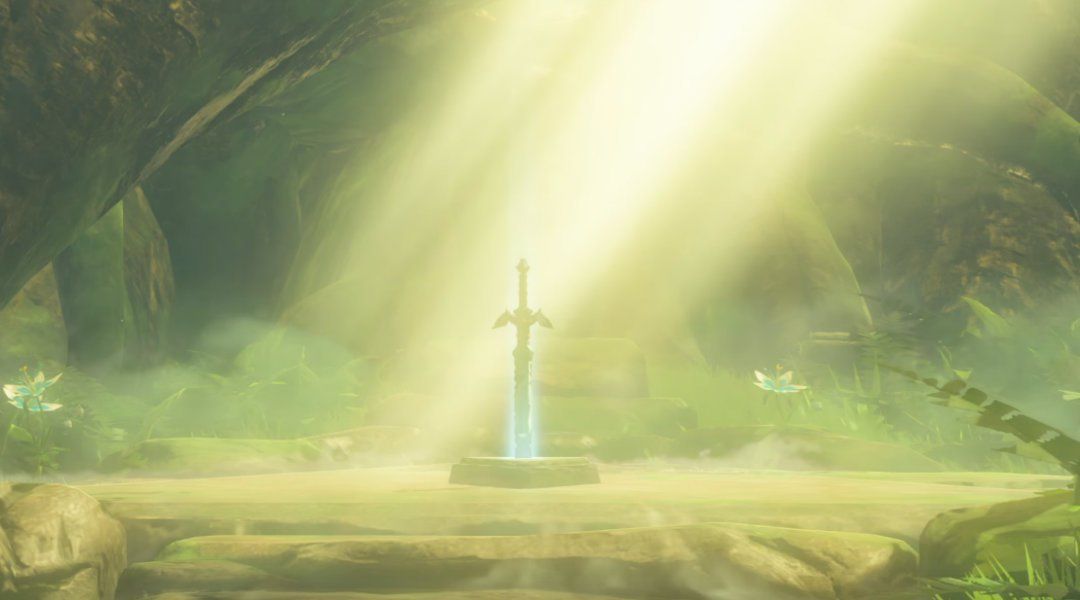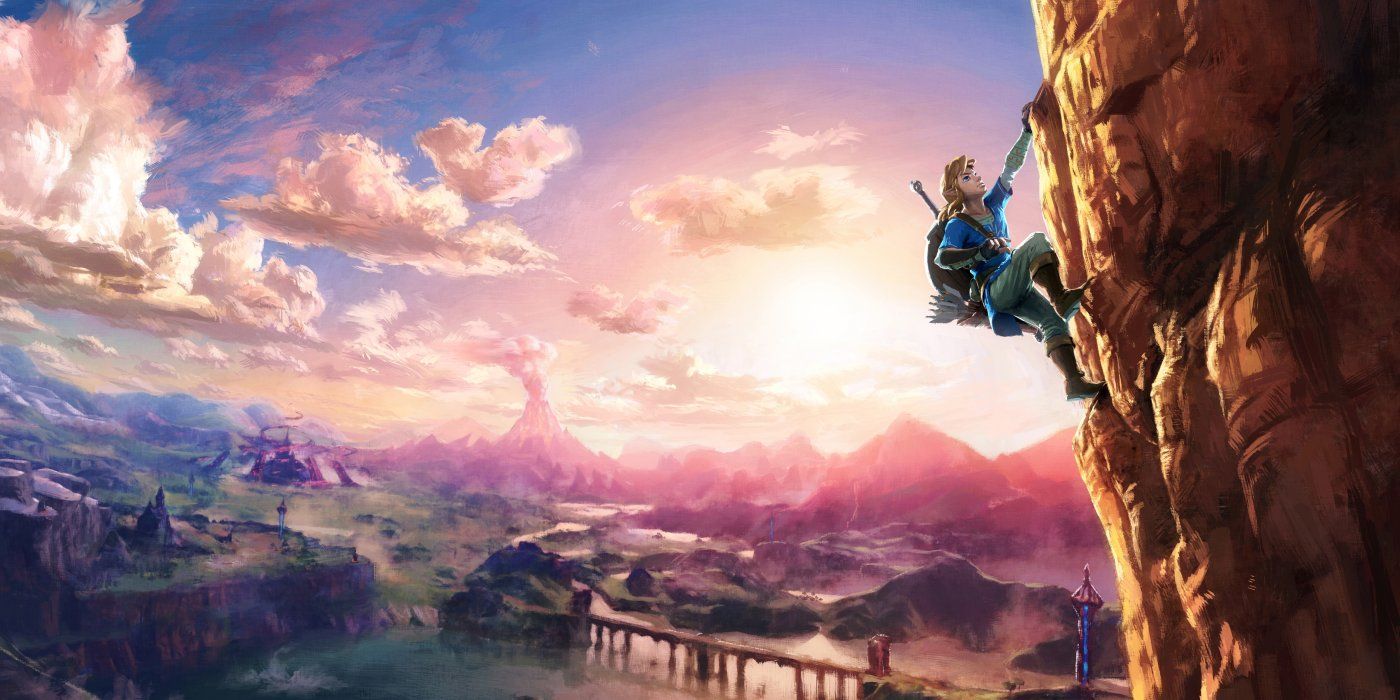Ask anyone what their opinion of the original Legend of Zelda, and you’ll get a combination of “it’s too hard,” “it stinks,” or, most predominantly, “it’s confusing.”
It’s a shame that the title has fallen out of favor so dramatically when compared to its modern brethren, as “the Hyrule Fantasy” has so much to offer gamers both young and old.
Sure it’s hard, but it’s not unfair. Yes, it’s confusing, but the initial mystery leads to incredibly satisfying discoveries. And no, it doesn’t stink; you’re just not used to a game letting you loose in a world rife with secrets and complexities without a fairy guide to help you along the way.
Very few games are as unabashedly (and intensely) open-ended as Zelda, especially on the NES (or even the SNES and beyond!), and while it can be a challenge to acquire a taste for it if you’re strictly a modern gamer, it’s worth it in the end.
One of the coolest aspects of this series-starter is the insane amount of little details littered amongst its already obscure world, and we’re going to be discussing them today with the hopes of getting newcomers (or even seasoned Zelda vets) excited about Link’s first journey.
In our list of 25 Hidden Details In The Original Legend of Zelda Only Super Fans Notice, we’ll be discussing fantastic references, helpful tips, odd Easter Eggs, and even the game’s connections to sequels and the overall plot of the Zelda franchise.
Hope you’ve got some fairies in a bottle, because this is going to be a wild ride!
Controlling Enemy Populations
Some of the later Labyrinths are filled with immensely powerful and annoyingly difficult enemies. This isn’t good for your health, but it also makes backtracking far more perilous than necessary.
Luckily, you can keep enemy populations down with a VERY easy trick: if you eliminate every enemy but one on a screen, the next time you return, only that last enemy will be there, rather than the entire clan.
Obviously, this trick isn’t foolproof, and sometimes it can be downright impossible to perform, but always keep it in mind if you need to tip the scales in your favor.
Getting A Free Key
After years of games like Ocarina of Time, players have been conditioned to think that Small Keys only work in the dungeons that they were found in.
Crazily enough, that isn’t the case in the original Legend of Zelda.
Keys are universal, and can even be purchased from certain vendors if necessary, but there’s one way to get an extra key early on (and you never know how it might come in handy.)
Enter the first Labyrinth, exit, go back in, and then a certain door will unlock itself.
Why? Who knows, who cares. You just got a free key.
The Second Quest
The NES Zelda is infamous for its unhelpful hints and extremely well-hidden secrets (including important dungeon entrances).
That said, part of the game’s joy is exploring Hyrule and slowly becoming familiar with its layout while also learning methods for discovering secrets, like pushing suspicious stones.
By the end of the game, you’ll feel like you conquered an entire continent… but then comes the Second Quest.
The Second Quest remixes the entire game, including Labyrinth locations and layouts, along with key items and much more.
You’ll suddenly find that the so-called “conqueror of Hyrule” is nothing more than stranger in a strange land.
The King Of Hyrule
One of Breath of the Wild’s chief inspirations was unquestionably the original Legend of Zelda, and when some of the first trailers were released, longtime fans went nuts to see a cloaked and bearded old man giving advice to Link.
While the old man would later be revealed as the long-deceased King of Hyrule, but the reason that old school fans were losing their marbles was because the character’s design and purpose was clearly based on the old man from the original game.
“IT’S DANGEROUS TO GO ALONE. TAKE THIS” is one of gaming’s most iconic moments, so it was awesome to see a modern-day version of the character.
The Secret Save Screen
While it’s a gift from heaven that the original Legend of Zelda has a save feature (unlike the comparable Metroid), there’s one major issue: you need to perish before you can actually save the game.
Thankfully, there’s a workaround for this dilemma, and although it’s probably a little more convoluted than it really should be, it’s still extremely helpful.
Go to your inventory and then, using a second controller, press up Up and A.
This will take you to a secret screen allowing you to save at your leisure, minus all the doom and gloom.
Starting With Full Health
Health is in dangerously short supply in the original Legend of Zelda. Enemies do drop hearts, but they’re often in short supply, as are the rare fairies (who you might not even be able to catch).
Like health, rupees are also scarce, so constantly buying potions is out of the question.
Worst of all is that every time you start the game, you’ll only have three filled hearts.
No problem: visit a Fairy Fountain and while you’re being healed, use the Secret Save Screen.
Next time you play, you’ll be at full health!
The Second Quest’s Labyrinths
The Second Quest will keep even the most hardened Zelda veterans on their toes.
With its rearranged Labyrinths, altered Key Item locations and more to contend with, the land of Hyrule regains all the mysteries that you had once considered solved.
One cheeky aspect of the all the rearranging comes in the form of the Second Quest’s Labyrinths, as if you look at their maps, you’ll see that five of them resemble letters and, when arranged properly, spell out “ZELDA.”
This is also a hint on how to easily start the Second Quest if you’re feeling confident. Simply put your name as “Zelda” when starting a new file, and you’ll be in the Second Quest.
Keeping Your Bait, Mate
One of the more bizarre puzzles in the original NES romp involves being stopped by a rather cranky Goriya, who does nothing but grumble in dejected protest.
The solution is to purchase bait from a shop, which will then satiate the beast and allow you to pass so you can finally proceed with your arduous quest.
Here’s the thing: rupees don’t grow on trees, and bait ain’t cheap, so you’re best off swindling the oaf.
Right when the famous “secret” jingle plays after giving out the bait, immediately use the Secret Save Screen.
Upon booting up the game again, the grumbling fiend will be gone, and you’ll still have the bait.
The Moblin’s Dog-Like Appearance
One of the scariest moments in Ocarina of Time (aside from the nightmare fuel Bottom of the Well, horrifying Shadow Temple, eerie Forest Temple, and… sorry about that; we were descending into madness) was in the Sacred Forest Meadow, where the serenity would be shattered by a bloodcurdling warcry from a giant humanoid dog charging us at full speed.
That creature is known as a Moblin, and it’s been a fixture of the Zelda series for years. While it’s gone through many incarnations, its most predominant feature (up until recently) is its bulldog-like face.
It’s cool to see that even with the original’s limited graphics, the Moblins still had their canine appearance.
Oracle of Seasons’ Biggest Secret
The Oracle games on the Game Boy Color are oddities in the Zelda line-up, as they are traditional-style games developed not by Nintendo, but Capcom of Mega Man fame.
Both Oracle of Ages and Oracle of Seasons scratch the classic Zelda itch and are worth playing, but Oracle of Seasons, in particular, has a curious history.
While the final product would be its own thing, it actually started out as a remake of the original game, and some remnants of that can still be found, such as the Gnarled Root dungeon design.
Swiftly Ending The Bubble Curse
As you barely escape an encroaching mob of Darknuts in the later Labyrinths of the game, your heavily wounded Link stumbles into a room filled with enemies. Luckily, they’re frail and should you play your cards right, you could easily defeat them despite your minimal health.
And then a Bubble comes, curses you, and you’re destroyed.
Being cursed by a Bubble is one of the greatest banes in the entire franchise, especially in the first game.
Thankfully, there’s an easy trick to get you swinging your sword again.
Simply play the Recorder and you’re ready to go!
Gan(n)on’s Appearance Music
The original game’s soundtrack is nothing short of an all-time classic. Obviously the main theme and its “Hyrule Field” rendition are some of the most well-known video game pieces in history, being remixed and referenced for decades, but even the game’s lesser-known tracks have been treated with reference, such as the final dungeon’s music getting remixed into Breath of the Wild’s lava theme.
One lesser-known track is Ganon’s dramatically cheesy appearance fanfare.
Surprisingly, this piece was referenced in Wind Waker, when Phantom Ganon made its presence know, creating a fun Easter Egg in the process!
Spectacle Rock
In countless Zelda games, a mountain range or rock formation called “Spectacle Rock” appears.
The area in question often consists of two circular platforms with a thin bridge in between, vaguely resembling glasses or “spectacles.”
This tradition is traced all the way back to the premiere title in the franchise, as the final Labyrinth, Ganon’s lair, was located within the area called Spectacle Rock, behind a bombable wall.
To be fair, this version of the location, while still seeming suspicious, doesn’t really look like spectacles… but hey, they tried.
The Dungeons Are A Jigsaw Puzzle
The Labyrinths in the original Legend of Zelda all have unique shapes that reference their names. The first Labyrinth, “The Eagle,” is shaped like a bird, for example.
What’s cool about ALL of the unique Labyrinth designs is that they actually fit together pretty well.
We don’t mean that in the sense that the Second Quest’s dungeons spell out “ZELDA,” either; these actually go together.
This reason for this is because all of the Labyrinths are on the same map in order to save space.
Why Pols Voice Doesn’t Like Loud Noises
The quality of advice offered by the inhabitants of Hyrule during Link’s debut quest can range from surprisingly helpful, to borderline Engrish, or, at worst, total nonsense.
The manual isn’t safe from this problem, either, as it claims that Pols Voice doesn’t like loud noises.
In game, the only way to destroy these devilish beasts is with an arrow, but in Japan, the advice actually made sense.
By screaming into the Famicom’s built-in microphone, you would wipe out Pols Voice in an instant.
Hidden Caves Are Only Towards The North
One of the chief complaints from folks playing the original Zelda for the first time are the bombable walls. Unlike in subsequent entries, there’s no obvious way to know whether a wall has a weakpoint.
In Labyrinths, there are at least maps to reference, but in the overworld, you’re out of luck… or are you?
While this isn’t totally helpful, all destructible overworld walls are to the North.
So don’t waste bombs in overworld by attempting to detonate walls to your left, right or bottom. Save them for walls that are facing you from the North.
The Two-Force?
The Triforce is the most iconic item in the entire franchise of Zelda. Shockingly, what the Triforce actually is in its original incarnation is bizarrely different from what most Zelda fans would know.
To start, there are only two Triforce pieces, rather than three. So where does the “Tri” come in? Well, they’re triangles… and that’s about it.
In fact, there are eight of these triangles that you need to collect in order to make a whole “Triforce.”
This deviation would be explained in the Hyrule Historia, but we’d have to wait for the maligned sequel to actually get the “traditional” concept of the Triforce.
The Masterless Sword
Where the Triforce is the MOST iconic item in the entire Zelda franchise, the Master Sword is almost assuredly the second.
The sword of evil’s bane is such an integral, key item to the series that there’s an entire game dedicated to its creation.
It might come as a shock to some, but the Master Sword makes no appearance whatsoever in the original game.
Instead, the ultimate weapon is the “Magic Sword.”
While we’re at it, give up hope for any Light Arrows. Instead, Ganon’s weakness is the “Silver Arrow.”
The Open World Lineage
One of the best examples of an open-world game is Zelda’s own Breath of the Wild, which features an incredibly detailed Hyrule that rewards exploration with fantastic secrets.
As we said earlier, BOTW’s game design took inspiration from the original game’s open world, but it’s important to note just how much the original had that its modern sibling used.
The original is almost entirely non-linear, with most Labyrinths accessible from the start. There are rafts for sailing the seas, trees to burn, minigames to enjoy, and a plethora of empowering secrets.
This amount of freedom is inconceivable for the NES, and it’s awesome that BOTW was just as impressive for its own generation.
Octoroks And Guardians
Octoroks are some of the most common enemies in the Zelda series, and have appeared in countless entries.
In the original game, it’s likely that Octoroks will be the first enemies that you see, and they make quite an impression with their rock-shooting noses and stubby little feet.
Today, we know that Octoroks are tiny creatures, but back during the NES era, things weren’t so cut and dry.
In fact, Breath of the Wild’s gigantic, lethal octopus-like Guardians were directly inspired by what a developer thought the Octoroks in the original looked like, picturing them not as tiny non-threats, but massive, devastating titans!

